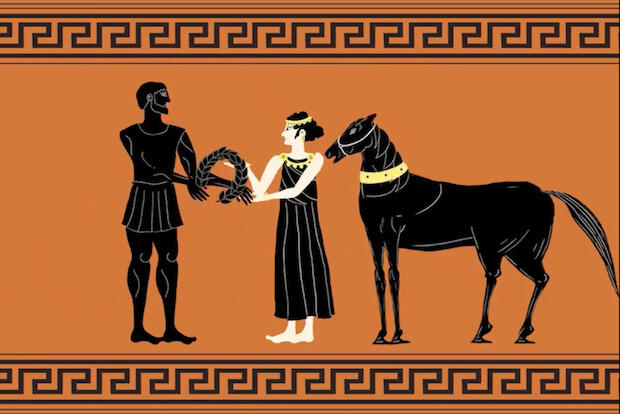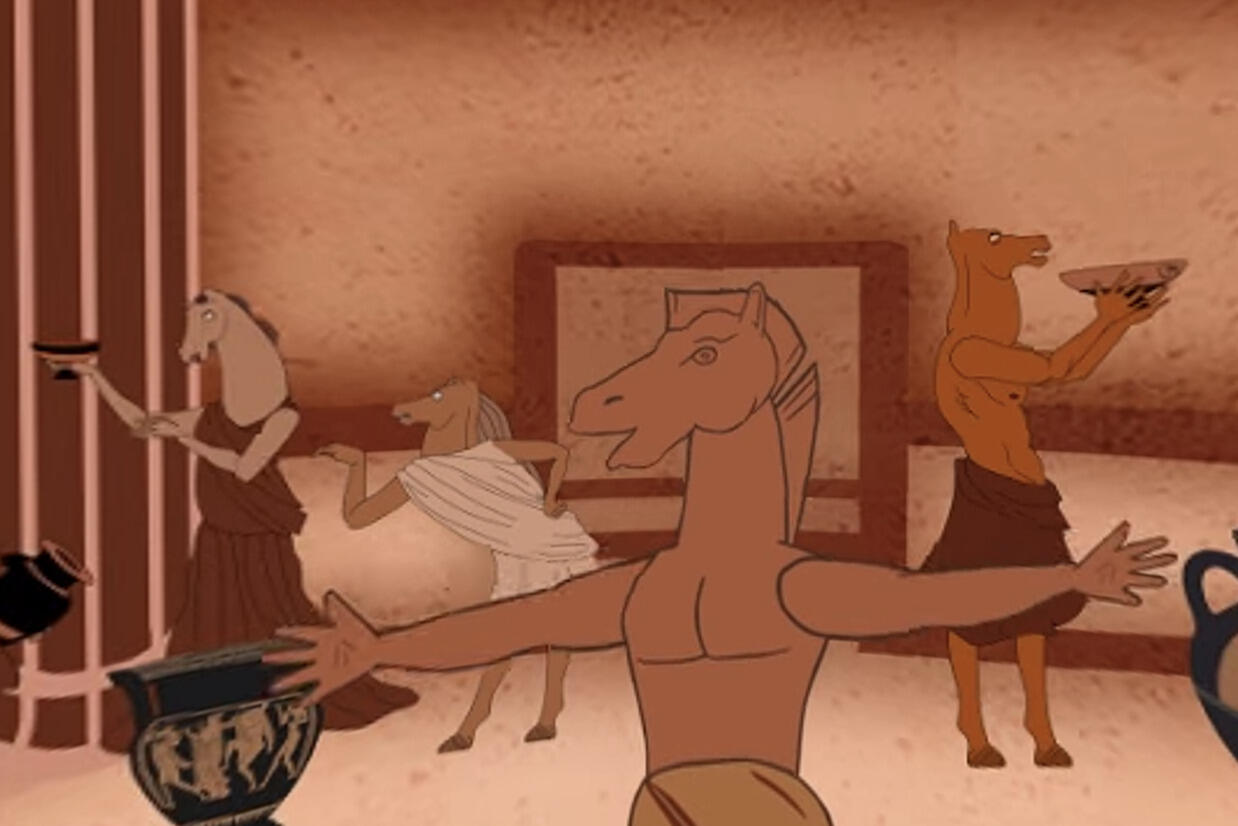
March 6, 2018
A horse is a horse of course, of course
Share this story
This past fall, Pam Turner’s Kinetic Imaging class at Virginia Commonwealth University worked with Virginia Museum of Fine Arts staff to create animations exploring equine imagery in art and the function of decorated vases in ancient Greek society. The results are on display now through July 8 as part of “The Horse in Ancient Greek Art” exhibition at the VMFA.
“This collaboration offered a wonderful learning model as the students were directly involved with the materials and learning about ancient Greek art, as well as new animation techniques and how to express ideas in sound and movement,” said Turner, an associate professor and chair of the Department of Kinetic Imaging.
Inspired by animated vase videos posted to YouTube, Peter J. Schertz, Ph.D., curator of ancient art at the VMFA, approached Turner with the idea a year ago.
“We began by visiting the VMFA ancient Greek art collection and getting a crash course in the art, culture and mythology of that world as Dr. Schertz led us through the exhibition,” Turner said. “I think an interesting link for us was learning about how some of the vases were used, especially the cups that would have been part of games, poetry or storytelling at the symposium, [a conversation in ancient Greece among wealthy, learned men that involved lots of drinking]. This activated the vases and cups so that they could be considered the ‘animated’ media of that time.”
Schertz thought the collaboration would be a fun way to engage an audience that might not normally think about ancient art.
“The only thing that I really wanted was to make sure they used objects in the collection and that it pertained to the exhibition,” he said. “But beyond that, I really wanted to encourage them to do whatever. These are meant to inspire — especially with myths. Myths function by being reinterpreted by every generation.”
Myths function by being reinterpreted by every generation.
The students then completed a series of guided brainstorming sessions to see what they wanted to further explore. From there, they considered the many ways that the concepts could be approached, fitting the material to the form in which it would be experienced.
“Animation was the springboard, but animation has many forms,” Turner said. “Two ideas and 'platforms' were arrived at as the ones most students were interested in developing and from there the teams formed fairly organically.”
The project connects a contemporary design element to a period of ancient history, helping visitors access the work as they watch the animations.
The first project, “Horses, Gods and Heroes,” is an interactive, menu-driven piece in which the audience can select animations to watch. It was animated by Kinetic Imaging students Mat C. Burnet, Alexander DeMoll, Hye Su Jun, Tanner Miller, Hannah Moon and Wandaryna Phou.
The second is a 360-degree animation in which the audience uses a trackball to explore an imaginative re-creation of a Greek symposium. The animations can be viewed on touch screens in the gallery or online. The “Horsymposium” was created by Kinetic Imaging students Ina Choi, Joshua Cromwell, Peyton Johnson, Eun-Young Lee, Flow M. Yen and Sheena Zheng, with voice work by classmate Michael Ezeobi and faculty member Robert Kaputof.
John Wagner, a VCU Kinetic Imaging alumnus, served as technology manager and a liaison between the class and the museum's technology group.

“I think their final products are fantastic,” Turner said. “The students learned a lot and really committed to making this happen. Animation takes time and attention, as well as acute visual and technical skills. … They also learned to work as a team on a project that had a firm deadline and a ‘client.’ The museum team came to hear them pitch their ideas and also came to the final presentation to offer final advice and give a thumbs up. The museum team was supportive and enthusiastic. It really was a bonus for the students to have them in the classroom.”
Schertz was thrilled that — even at 2,500 years old — ancient Greek art still inspires artists today.
“Often we tend to put art, and especially ancient art, on a pedestal as something kind of intimidating, that you have to be a scholar to deal with,” he said. “One of the points of this exhibition is that no, you don’t have to be a scholar. You don’t even have to know anything about art. Just enjoy the objects.”
The museum will host a college night March 29, with some of the Kinetic Imaging students discussing their work.
Subscribe to VCU News
Subscribe to VCU News at newsletter.vcu.edu and receive a selection of stories, videos, photos, news clips and event listings in your inbox.










